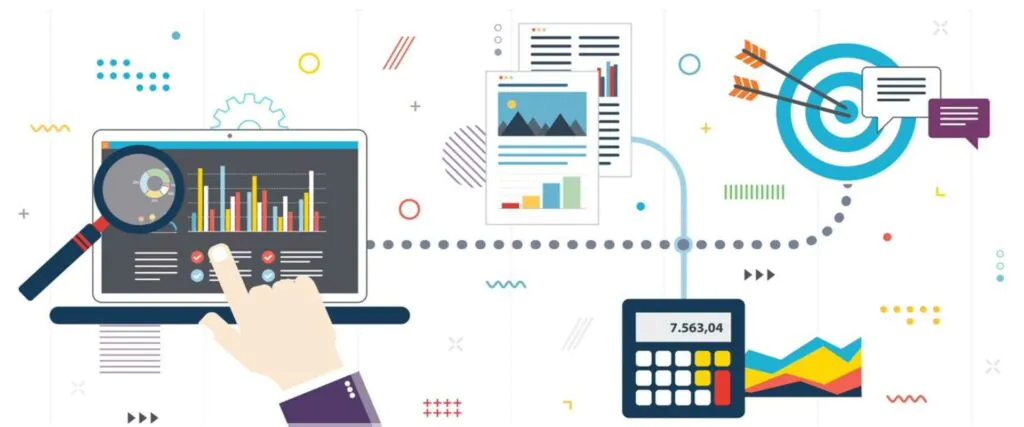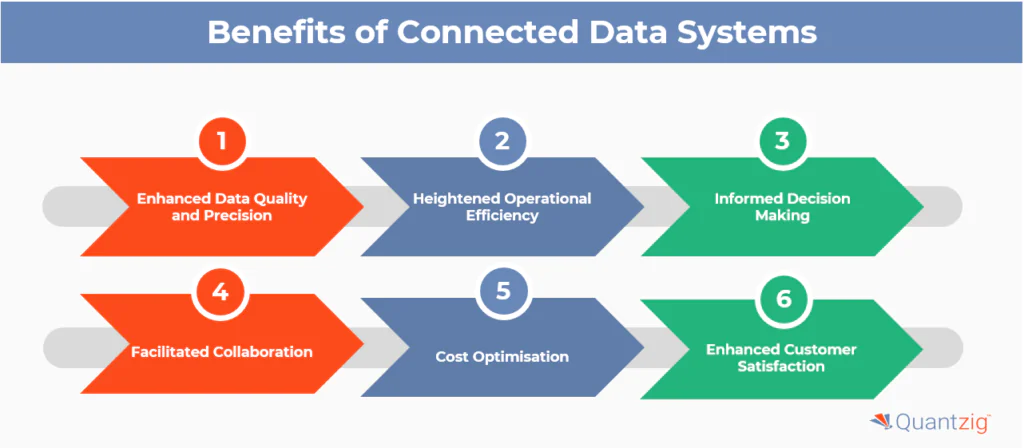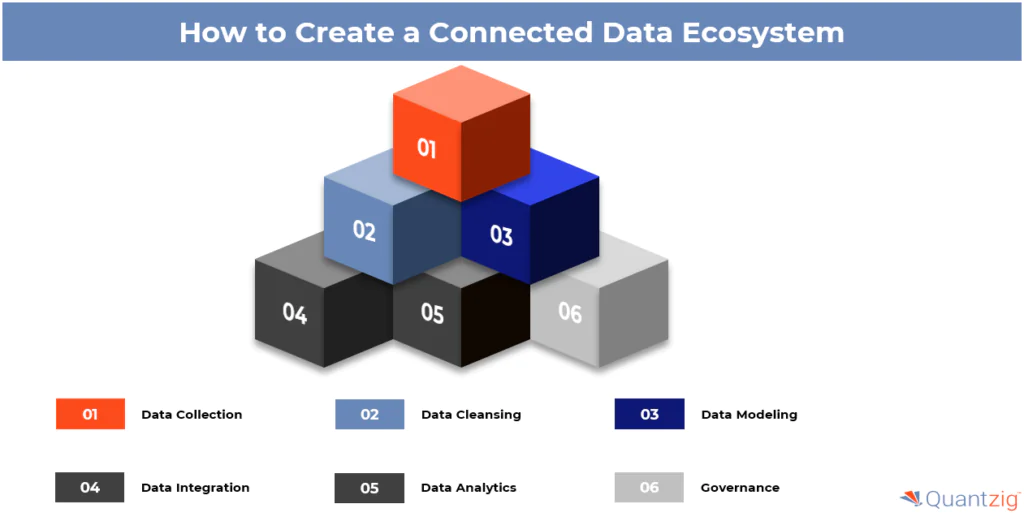Written By: Sudeshna Ghosh
Table of Contents
Introduction to big data technologies
We live in the big data era where tumultuous shifts are underway in BI, analytics, and data management tools, prompting enterprises to take a new perspective on creating a big data workflow ecosystem. Also, owing to the ongoing developments, these are no longer the outmoded, insular systems contained within corporate walls. The ability of businesses to interpret data and act on insights can be augmented using a connected ecosystem that includes a complex network of IT applications, business applications, connected ecosystem infographic, computing infrastructure, and advanced management tools that help capture and analyze analytical data. As a result, enterprises are not just looking at revamping their Big data components but are learning to integrate expertise and insight to drive growth and innovation.
While the dynamic nature of the market and continuous evolution of trends exert considerable influence on the big data ecosystem’s efficacy in producing comprehensive insights, our esteemed experts have discerned four fundamental steps that serve as the cornerstone for establishing a seamlessly connected data ecosystem. From identifying emerging trends to tracking key performance indicators, Quantzig enables users to seamlessly navigate complex data sets and extract actionable intelligence.
Book a demo to experience the meaningful insights we derive from data through our Big Data analytical tools and platform capabilities. Schedule a demo today!
Request a Free DemoWhat is big data important?
A big data ecosystem is a comprehensive network of interconnected tools, technologies, frameworks, and platforms that enable organizations to handle massive volumes of data. It encompasses various components that work together to collect, process, analyze, and visualize data. Here are the key elements of a modern big data ecosystem:
- Data Sources:
- These are the origins of data, both internal and external to an organization.
- Internal data sources include proprietary databases, spreadsheets, CRMs, and other resources within the organization.
- External data sources encompass databases, spreadsheets, websites, and third-party data aggregators.
- The quality and trustworthiness of data are crucial considerations during the sensing phase.
- Data Preparation Layers:
- This stage involves cleaning, transforming, and structuring raw data into a usable format.
- Data preparation layers ensure that data is consistent, relevant, and ready for analysis.
- Data Analytics Tools:
- These tools allow organizations to perform various analyses on their data.
- Examples include statistical analysis, machine learning, and data visualization tools.
- Data analytics tools help extract insights and patterns from the data.
- Data Lake:
- A data lake is a centralized repository that stores vast amounts of raw and unstructured data.
- Unlike traditional databases, data lakes accommodate diverse data types and formats.
- Responsive Data Architecture:
- A responsive data architecture adapts to changing data requirements and scales efficiently.
- Responsive data architecture ensures flexibility, agility, and responsiveness to evolving business needs.
- AI-Driven Intelligent Data Management:
- Artificial intelligence (AI) plays a crucial role in managing and optimizing data.
- AI-driven solutions automate data governance, security, and compliance.
- They enhance data quality, reduce redundancy, and improve decision-making.
- Enterprise Infrastructure:
- Robust enterprise infrastructure supports data storage, processing, and distribution.
- Cloud computing services, distributed databases, and high-performance clusters are part of enterprise infrastructure.
- Operations Strategies:
- Effective management of data operations strategies ensures smooth functioning of the ecosystem.
- Operations strategies include monitoring, maintenance, and performance optimization.
- Business Benefits:
- A well-constructed big data ecosystem leads to several advantages:
- Informed Decision-Making: Insights from data drive better business decisions.
- Competitive Edge: Organizations gain a competitive advantage by leveraging data effectively.
- Innovation: Data ecosystems foster innovation and new product/service development.
- Cost Efficiency: Efficient data management reduces costs, technology stack and resource wastage.
- A well-constructed big data ecosystem leads to several advantages:
In summary, a modern Big data components combines technology, processes, and people to unlock the potential of data. It empowers organizations to thrive in the data-driven era, making informed choices and achieving strategic goals.
What are the big data components?
Following are the essential Hadoop Ecosystem components that play a pivotal role in storying, unifying, analyzing, and visualizing data to help organizations to make informed decisions.
- Data Ingestion
Data ingestion, the process of acquiring and preparing data for analysis, is a fundamental step in big data management. This encompasses data extraction, loading, and transformation into the data lake. Scalable and efficient data intake is facilitated by prominent solutions like Flume and Apache Kafka, pivotal components of the Hadoop ecosystem, ensuring seamless information flow from diverse sources into the big data ecosystem.
Moreover, these technologies provide robust methods for handling real-time streaming, high-volume batch data, and integration with various protocols and formats. The effective accumulation of data from these diverse sources is critical for robust big data workflow management. Businesses rely on strong methodologies and tools to ingest real-time information or batch mode data from a myriad of sources, including IoT devices, business systems, and social media. By proficiently managing data input, organizations establish a solid foundation for analyzing, storing, and leveraging big data to drive operational decisions, enhance customer experiences, and improve innovation while lowering costs and increasing revenues. This process is facilitated through the utilization of data warehouses, data lakes, data processing, customer information, process efficiency, data science, data exchange mediators, data architectures, Big data software leaders, customer intelligence, artificial intelligence, operational data, iPaaS, improved innovation, and data exchange mediators.
- Data Storage
Data storage plays a pivotal role in the entire ecosystem, crucial for effectively managing large datasets. To handle such vast amounts of information, distributed and scalable systems are indispensable. At the heart of the Apache Hadoop ecosystem lies HDFS, short for the Hadoop Distributed File System, a core component providing fault-tolerant storage across a network of interconnected devices. Through HDFS, data is dispersed widely across numerous nodes, Big data software leaders, ensuring resilience and high availability.
Moreover, cloud-based storage technologies such as Amazon S3 and Azure Blob Storage offer affordable and scalable options for housing massive volumes of content. These cloud storage solutions guarantee dependability, accessibility, and seamless integration with cloud services.
For organizations, these cloud storage platforms provide unlimited scalability, durability, and accessibility, enabling easy storage and retrieval of data as needed. By leveraging robust storage solutions, organizations can efficiently manage and retrieve information for analysis, maximizing the potential of their big data assets.
In the realm of operational decisions, data producers, Big data software leaders, data warehouses, data lakes, and data processing, cloud-based storage solutions prove invaluable. They contribute to process efficiency, lower costs, and improved innovation, ultimately enhancing customer experiences and increasing revenues. Through the utilization of data science, artificial intelligence, and operational data, organizations can glean valuable insights, facilitated by data exchange mediators and sophisticated data architectures. These insights fuel customer intelligence, driving improved operational performance and fostering innovation. Additionally, iPaaS (Integration Platform as a Service) solutions further streamline data exchange and integration processes, enhancing overall operational efficiency.
Steps to Build a Modern Ecosystem using big data analytics technology

Step 1: Discovery & Repository Creation
The first step in building a ecosystem revolves around collecting customer data and analyzing their sources while creating a unified source of truth. In an urge to devise a connected ecosystem, businesses tend to gather third-party information from disparate sources across the organizations and then integrate domain-specific data pre-processing techniques & build machine learning models to address critical issues. By adopting such an approach, business decision makers end up creating their version of a single source of truth and continue benchmarking results unaware of its impact on the business process efficiencies. To avoid such issues, it’s essential to create a single source of truth that unifies domains and promotes collaboration to build and deliver a 360-degree view of the business goals.
Step 2: Centralized, Connected Ecosystem Design
Quantzig’s approach to devising a connected ecosystem depends on the level of analytical maturity within an organization. Before designing the centralized connected ecosystem, our experts suggest businesses must conduct an analytical maturity assessment that can offer insights on the right integration and orchestration tools, integrated data, the approach, and technology based on the business goals. In the business context, having worked with business leaders from different verticals, we do see a growing trend toward the deployment of a robust, organized ecosystem that can power the next wave of in-depth decision-making processes at scale. By analyzing the analytics maturity of our clients and assessing the ideal characteristics of a data repository, we help prospects design a centralized ecosystem that aligns with their goals and helps fuel growth and profitability.
Step 3: Collation & Analysis
Mastering data collation and analysis is how businesses today avoid flying blind. Increasingly, this requires tapping into insights from external sources and a growing number of businesses are doing so in pursuit of a competitive edge. However, the actual operational analysis begins after designing the ecosystem. A robust repository plays a vital role in helping businesses collect and analyze data from disparate sources. With the unrelenting pressures to innovate and grow, companies must consider enhancing their ability to collate, segment, and analyze data using a connected, evolving ecosystem. Through our advanced solutions, our team of scientists, evangelists, and business analysts help clients unravel new insights from the data they possess, overcome business frustration, and enhance business performance.
Step 4: Insight Generation
The final step in creating a connected ecosystem revolves around insight generation and all the processes that help analyze data. During this phase, our analytics experts collaborate with representatives from various teams within your organization to communicate the finding and share personalized recommendations to meet your business goals and KPI’s. Once a strong foundation for insight generation is set, the processes can be duplicated to ensure your teams are abreast of the latest findings and can leverage new insights to inform decision making.
With the ongoing developments and technological advancements across industries, the ecosystem of businesses will continue to lag, leading to challenges in analysis, delays, and insight generation. These challenges are poised to present major opportunities for those who can leverage analytics to meet the evolving market needs.
Get started with your complimentary trial today and delve into our platform without any obligations. Explore our wide range of customized, big data analytical services built across the analytical maturity levels.
Start your Free TrialBenefits of Connected data Systems
Utilizing the potential of interconnected data confers substantial advantages upon organizations, enhancing overall performance and fostering superior business outcomes. Data ecosystems play a pivotal role in facilitating revenue generation, cost optimization, productivity enhancement, and the augmentation of customer service standards.

1. Enhanced Data Quality and Precision: Connected data ecosystems expedite the process of data validation and reconciliation, culminating in heightened accuracy and reliability. Validated, enriched, and curated data instills trust and serves as the bedrock for informed decision-making, thus enhancing operational responsiveness.
2. Heightened Operational Efficiency: The integration of connected data enables automation of processes, diminishing manual effort and errors while expediting decision-making processes. Consequently, employees devote less time to data retrieval, optimizing operational efficiency.
3. Informed Decision-Making: Access to extensive data sets from diverse sources empowers organizations to make data-driven decisions, facilitating more insightful strategic planning and execution.
4. Facilitated Collaboration: A connected data ecosystem streamlines data sharing across departments and teams, fostering seamless cross-functional collaboration and alignment.
5. Cost Optimization: Connected data ecosystems drive cost savings by streamlining data retrieval processes, automating business operations for enhanced efficiency, and mitigating risks associated with data errors and redundancies.
6. Enhanced Customer Satisfaction: Organizations leveraging connected data ecosystems gain deeper insights into customer preferences and behaviors, enabling them to deliver personalized experiences in a timely manner. Consequently, these fosters heightened customer satisfaction and loyalty, bolstering competitive advantage.
Quantzig’s big data analytics tools offers a comprehensive solution for businesses seeking to harness the full potential of their data. With customizable dashboards tailored to specific business needs, our platform ensures that stakeholders across the organization have access to relevant insights, driving strategic growth and competitive advantage.
Experience the advantages firsthand by testing a customized complimentary pilot designed to address your specific big data analytics requirements. Pilot studies are non-committal in nature.
Request a Free PilotHow to Create a Connected Data Ecosystem?
Developing a cohesive big data analytics tools ecosystem entails the meticulous collection and integration of data, the establishment of relational models among data elements, and the correlation of these elements to extract meaningful insights through analytical processes. Essential steps in crafting a connected data ecosystem encompass:

1. Data Collection: Commence by gathering requisite data from diverse sources, including databases, applications, and spreadsheets, with a focus on comprehending both existing and necessary data sets.
2. Data Cleansing: Employ data preparation pipelines to refine data quality. This involves standardizing data elements, restructuring layouts, enhancing data attributes, and eliminating duplicate records.
3. Data Modeling: Formalize relationships between data elements by constructing a structured data model that delineates data architecture and interconnections.
4. Data Integration: Unify disparate data sources into a singular interconnected ecosystem. This may entail consolidating data into a centralized database, leveraging APIs for data retrieval, employing data integration tools for automation, or implementing presentation layers to abstract complexity for end-users.
5. Data Analytics: Engage in analytical endeavors to extract insights from the interconnected data set. This encompasses activities such as data querying, report generation, and the development of predictive models.
6. Governance: Institute robust policies, processes, and technological frameworks to oversee the security, lineage, quality, and accessibility of data within the ecosystem.
How to Harness the Power of Connected Data?
Harnessing the power of connected data involves a comprehensive approach that leverages various key components within the ecosystem:
1. Data management tools: Employ advanced data management tools to organize, store, and manipulate data efficiently, ensuring its accessibility and reliability.
2. Data integration and orchestration tools: Integrate disparate data sources seamlessly and orchestrate data flows to enable smooth communication and collaboration across the ecosystem. You can enhance efficiency and streamline workflows with sophisticated data integration and orchestration tools.
3. Data warehousing and analytics systems: Utilize robust data warehousing and analytics systems to store vast amounts of data and extract valuable insights through sophisticated analytical processes.
4. Data governance processes and tools: Implement rigorous data governance processes and tools to ensure data quality, security, and compliance with regulatory standards throughout the ecosystem.
5. Data security and privacy systems: Prioritize data security and privacy systems by employing state-of-the-art systems and protocols to safeguard sensitive information against unauthorized access and breaches.
6. Machine learning tools: Harness the capabilities of machine learning tools to automate data analysis, identify patterns, and make predictive insights, thus enhancing decision-making and operational efficiency.
7. Business operations: Align data utilization with business objectives and operational needs, ensuring that insights derived from connected data drive strategic initiatives and improve overall business performance.
8. Technology platform: Invest in a robust technology platform that supports the integration, processing, and analysis of connected data, enabling seamless interaction and collaboration among various components.
9. Data management infrastructure: Develop a resilient and scalable data management infrastructure that can accommodate the growing volume and complexity of data within the ecosystem, ensuring its sustainability and effectiveness.
By integrating and optimizing these components within a connected data ecosystem, organizations can unlock the full potential of their data assets, driving innovation, efficiency, and competitiveness in today’s data-driven landscape.
Conclusion
In the era of big data, enterprises are undergoing significant shifts in business intelligence, analytics, and data management tools. The traditional, isolated systems within corporate boundaries are being replaced by connected ecosystems that leverage a complex network of IT applications, business applications, computing infrastructure, and advanced management tools. This transformation allows businesses to interpret data more effectively, act on insights, and drive growth and innovation. By integrating expertise and insight, enterprises are revamping their big data ecosystems to meet the challenges of a dynamic market landscape and capitalize on emerging opportunities.



